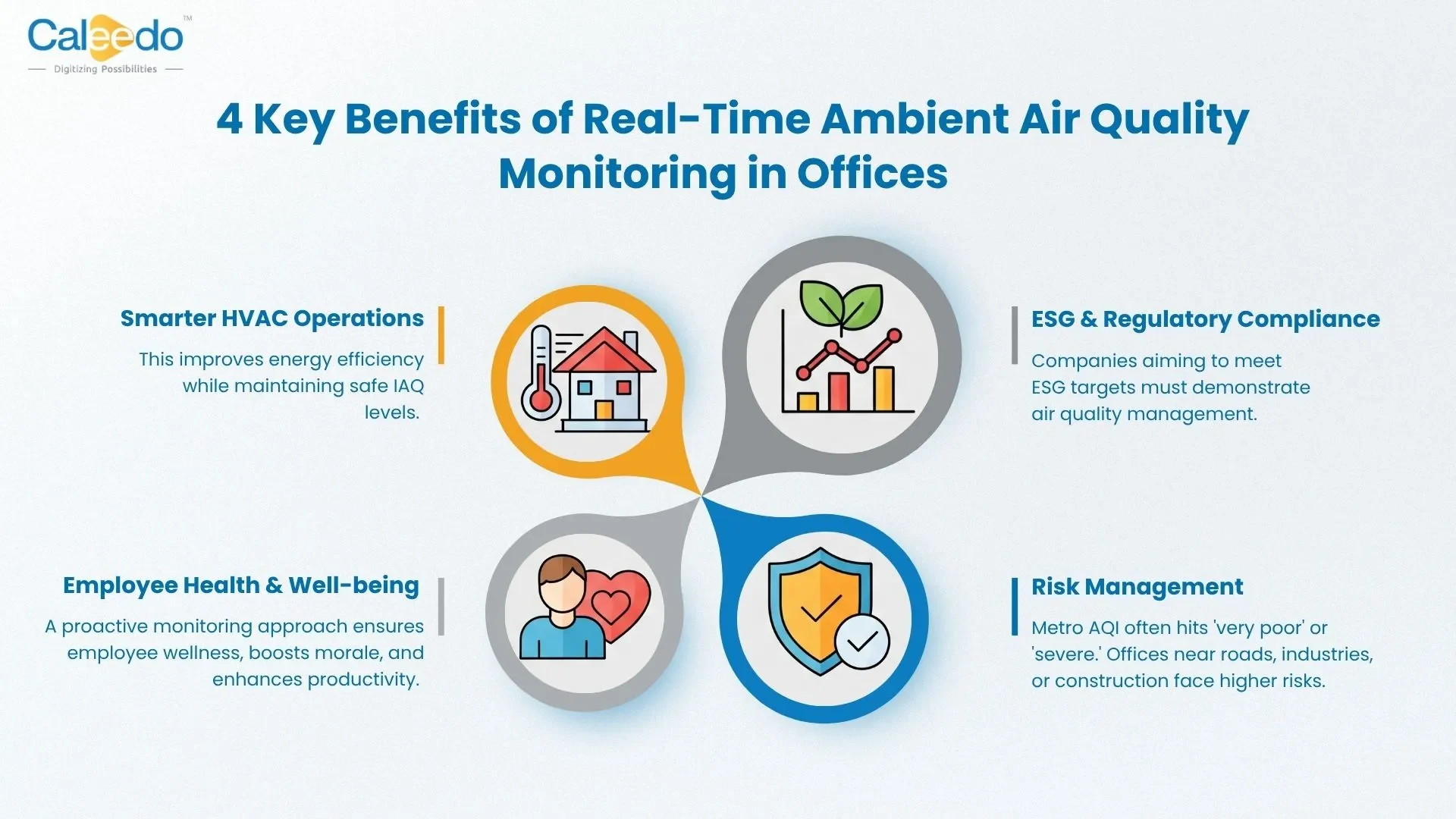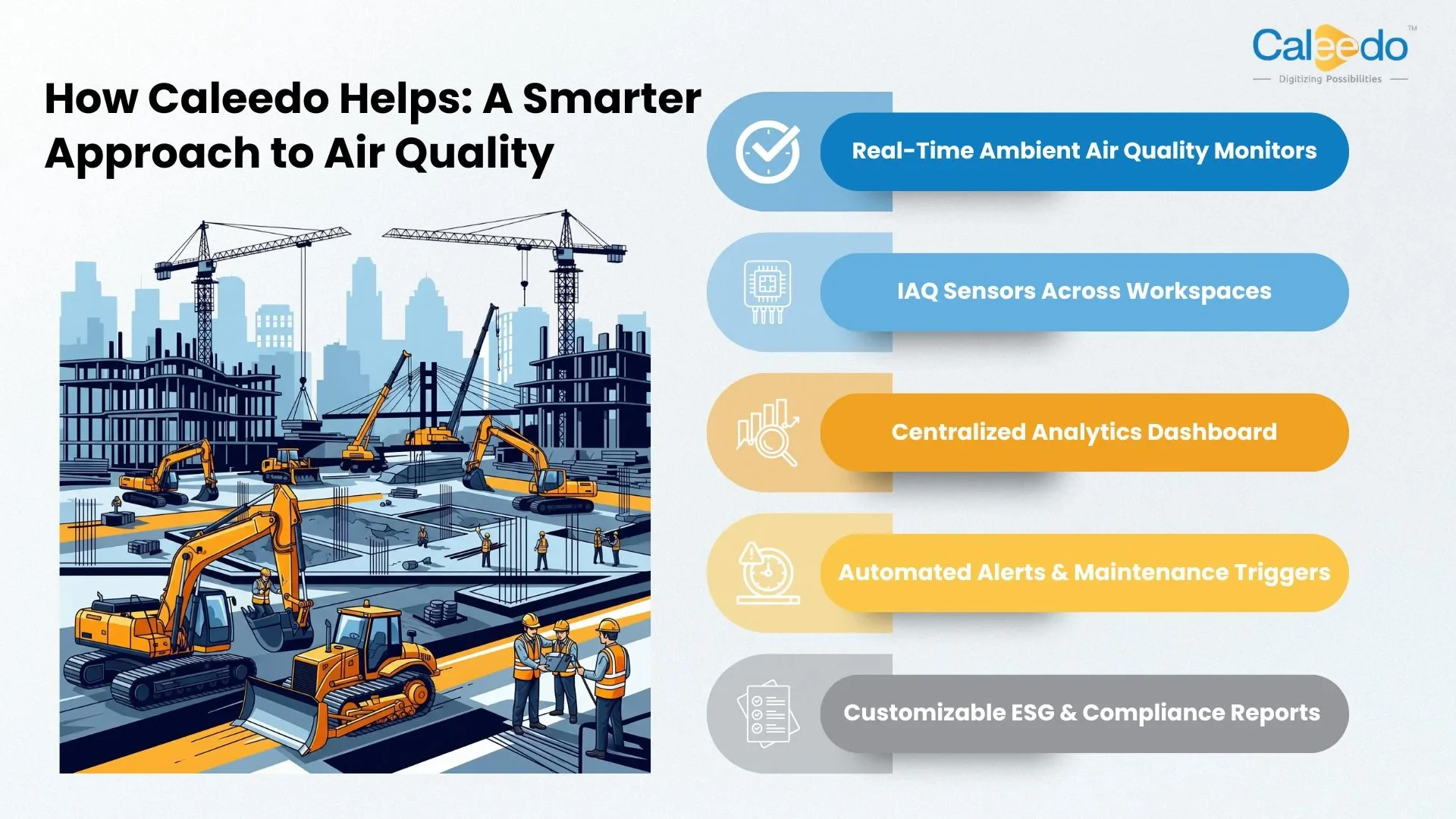
As modern workplaces prioritize health, productivity, and sustainability, ensuring clean indoor air has never been more crucial. While many businesses focus on Indoor Air Quality (IAQ), they often overlook a key factor: Ambient Air Quality Monitoring Systems (AAQMS).
Monitoring real-time ambient air quality—the condition of the air outside your building—plays a vital role in determining the air quality inside. In this blog, we explore why integrating a real-time ambient air quality monitor is essential for effective IAQ management in office environments.
An ambient air quality monitoring system measures pollutants in the surrounding outdoor environment, including:
This data is typically summarized in the Air Quality Index (AQI)—a real-time score indicating pollution levels. The higher the AQI, the worse the outdoor air quality.
Office buildings rely on HVAC systems that draw air from the outdoors. If the ambient air quality is poor, it directly impacts the indoor environment—even if indoor pollution sources are well-controlled.
This is where real-time ambient air quality monitors become indispensable. By continuously tracking outdoor air conditions, facility managers can:
✅ Regulate HVAC air intake
✅ Adjust filtration levels
✅ Trigger alerts when pollution thresholds are exceeded
This proactive approach ensures healthier IAQ, especially in cities like Delhi, Mumbai, Bengaluru, or Hyderabad, where outdoor pollution fluctuates rapidly.

With real-time ambient air quality data, building automation systems can:
This improves energy efficiency while maintaining safe IAQ levels.
Studies show poor air quality leads to:
A proactive monitoring approach ensures employee wellness, boosts morale, and enhances productivity.
Companies aiming to meet Environmental, Social, and Governance (ESG) targets must demonstrate air quality management. Using ambient air monitoring systems strengthens environmental reporting, supports LEED/BREEAM certifications, and ensures regulatory compliance.
In metro cities, AQI levels often reach “very poor” or “hazardous.” Offices near roads, industrial zones, or construction sites face higher risks. Real-time ambient monitoring helps detect and mitigate risks before they affect indoor air.

At Caleedo, we believe healthy indoor environments require holistic, data-driven solutions. Our end-to-end smart facility platform integrates:
🔹 Real-Time Ambient Air Quality Monitors
Track outdoor pollutants (PM2.5, NO₂, SO₂, CO, O₃) with live AQI updates.
🔹 IAQ Sensors Across Workspaces
Monitor indoor CO₂, temperature, humidity, and VOCs to optimize comfort.
🔹 Centralized Analytics Dashboard
Gain insights with historical trends, benchmarks, and predictive analytics.
🔹 Automated Alerts & Maintenance Triggers
Get instant notifications when air quality thresholds are breached.
🔹 Customizable ESG & Compliance Reports
Generate downloadable reports for regulatory and sustainability goals.
Indoor air quality doesn’t exist in isolation—it begins with what comes from outside. By deploying a real-time ambient air quality monitoring system, offices can gain the intelligence they need to ensure cleaner, safer, and more compliant indoor environments.
Incorporating ambient air monitoring into your IAQ strategy is not just smart—it’s essential for the health and success of your workplace.
Platform
Resources
Company
Solutions
Industry
Function
Contact us
Feel free to contact us !
Copyright © 2024-2025 Caleedo | Powered By PAS Digital